Overview and Access Issues
An earlier version of the following article was published in Journal of Information Technology and Disabilities in December of 1994. It can be found at https://sites.uw.edu/sherylb. The content below has been updated and reprinted with permission. References cited can be found in the Resources section of this binder.
Increasing the Representation of People with Disabilities in Science, Engineering, and Mathematics
by Sheryl Burgstahler, Ph.D.
University of Washington
Abstract
Individuals with disabilities experience far less career success than their nondisabled peers. Three main factors cause individuals with disabilities to be underrepresented in STEM fields: preparation of students with disabilities; access to facilities, programs, and equipment; and acceptance by educators, employers, and coworkers. Technology can have a positive effect on all of these factors and help to open doors to new areas of study and employment. This article explores the role of information technology, describes a campus program designed to positively influence each of the factors, and makes a series of recommendations for action.
Introduction
Individuals with disabilities experience far less career success than their nondisabled peers (Blackorby & Wagner, 1996; National Organization on Disability, 1998; Office of Disability Employment Policy, 2001). Access to higher education can enhance the employability and vocational success of individuals with disabilities. A bachelor's degree or higher is a prerequisite for many challenging careers, including those in science, technology, engineering, and mathematics (Price-Ellingstad & Berry, 1999/2000). Although the number of individuals with disabilities attending postsecondary institutions is increasing, few of these individuals pursue academic careers in science and engineering, and for those who do, the attrition rate is high (Malcom & Matyas, 1991; National Science Foundation, 2000; Office of Disability Employment Policy, 2001).
Individuals with disabilities are also under-represented in science and engineering professions, and scientists and engineers with disabilities experience higher unemployment rates than do other scientists and engineers (National Science Foundation, 2000; Malcom & Matyas, 1991). However, the success stories of individuals in STEM fields (Burgstahler, 2001; Unger, Wehman, Yasuda, Campbell, & Green, 2001) demonstrate that opportunities do exist for people with disabilities who successfully overcome the barriers imposed by:
- inaccessible facilities
- curriculum materials
- computers, scientific equipment, and electronic resources
- lack of encouragement
- inadequate academic preparation
- lack of access to role models
- inadequate academic supports to bridge precollege education, undergraduate education, graduate programs, and employment
- negative attitudes and lack of knowledge about accommodations on the part of precollege and postsecondary educators
(Brazier, Parry, & Fischbach, 2000; National Science Foundation Task Force on Women, Minorities, and the Handicapped in Science and Technology, 1989; Presidential Task Force on Employment of Adults with Disabilities, 1999; Womble & Walker, 2001).
Individuals with disabilities who are also racial/ethnic minorities, female, from rural areas, or living in poverty face additional challenges to pursuing STEM careers (Atkins, 1998; Kundu, 1995; Schmidt-Davis, Hayward, & Kay, 1999/2000; Walker, 1991).
Steps to STEM careers for students with disabilities include gaining a college education (Horn & Berktold, 1999) and participating in relevant work experiences (Luecking & Fabian, 2000; National Council on Disability, 2000; National Council on Disability and Social Security Administration, 2000; Stodden & Dowrick, 2000a, 2000b; Unger, Wehman, Yasuda, Campbell, & Green, 2001). High-tech careers are particularly accessible to individuals with disabilities because of advancements in assistive technology that provide access to computers and scientific equipment (Smith & Jones, 1999). However, the inaccessible design of software, web pages, distance learning courses, and facilities continues to erect barriers (Burgstahler, 2002b; National Center for Education Statistics, 2000a, 2000b; Schmetzke, 2001). STEM academic programs and employment opportunities must be accessible in order for people with disabilities to succeed.
National Science Foundation projects for people with disabilities, racial/ethnic minorities, and women have identified promising practices for bringing students from underrepresented groups into STEM fields. Key among these activities are:
- hands-on science experiences in precollege environments
- work-based and research experiences
- bridge programs between academic levels
- tutoring and mentoring
- preparation of precollege and postsecondary educators and support staff
Further, comprehensive projects that integrate most or all of these elements are more successful in recruiting, training, and retaining students with disabilities in STEM fields than isolated efforts (American Association for the Advancement of Science, 2001; Doren & Benz, 1998; Leyser, Vogel, Wyland, & Brulle, 1998; Malcom & Matyas, 1991; National Science Foundation, 2001; Phelps & Hanley-Maxwell, 1997).
Discussion of the Problem
Individuals with disabilities are underrepresented in STEM educational programs and professions. Causes of this problem can be found in three areas: preparation of students with disabilities; access to facilities, programs, and equipment; and acceptance by educators, employers, and coworkers.
Preparation
For an individual with a disability to experience life to the fullest, independent living and self-advocacy skills must be developed (Bremer, Kachgal, & Schoeller, 2003; Izzo & Lamb, 2001). As the end of high school approaches, so does the termination of a structured environment and precollege support systems. Adolescents with disabilities who wish to attend college are often faced with responsibilities that they are unprepared to meet because they are conditioned to depend on others. Once enrolled, students with disabilities often hesitate to request the specific accommodations they need. The levels and types of resources available to students with disabilities in precollege programs, on postsecondary campuses, and in employment situations are different, and programs to help bridge the gaps between these critical stages are rare.
Students with disabilities are rarely encouraged to prepare for STEM fields. Since they do not consider a career in STEM an achievable goal, they do not take the courses necessary to prepare for postsecondary studies in these areas. High school and college students with disabilities, counselors, social service agency staff, and special education teachers often lack an understanding of the content and requirements of STEM programs in higher education and of the technology and other resources that make it possible for students with disabilities to pursue these fields.
Students with disabilities lack access to role models with similar disabilities who are successful in careers that they might otherwise have thought impossible for themselves (Seymour & Hunter, 1998; Summers, 2003). Potential role models are often great distances away, leaving individuals with disabilities isolated from those facing similar obstacles in school and work (Brown & Foster, 1990).To prepare for STEM studies, students need to be able to use the powerful tools of the trade at an early age. Although network technology can reduce social isolation and allow independent access to information resources, these tools are not often readily available to precollege students with disabilities.
Access
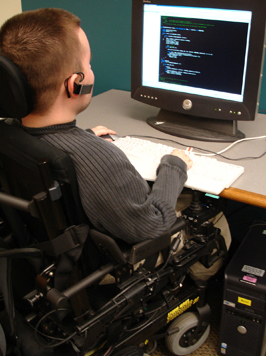
Computers, assistive technology, and network resources can bridge the communication and accessibility gaps for people with disabilities. Electronic communications provide options for independent access to people and resources. Computer and network access can increase levels of independence and have a positive impact on the academic progress and career success of individuals with disabilities (Burgstahler, 1992). Unfortunately, many individuals with disabilities and people in their primary support systems are unaware of the tremendous contributions technological innovations can make to the lives of individuals with disabilities. Students with disabilities are not guaranteed access to computing and networking technology in precollege and college programs (Burgstahler, 1992; Horn & Shell, 1990). Likewise, lab facilities and electronic resources are often designed in such a way as to be inaccessible to students with disabilities.
Those who wish to pursue STEM fields need access to publications in these fields, yet STEM publications are not always readily available in alternate formats. Making them available in an accessible electronic format is desirable, but some barriers still exist in making mathematics and scientific symbols and graphic images accessible to those who are blind. Universal access to publications will require the creation of new products, as well as promotion of the use of existing methods. Webmasters also need to apply standards, such as those used by the U.S. government, in order to take steps toward making their resources accessible to individuals with disabilities, including those who are blind and use text-to-speech technology.
Acceptance
Negative attitudes have been identified as the single most significant barrier faced by individuals with disabilities pursuing careers in science and engineering (Task Force on Women, Minorities, and the Handicapped in Science and Technology, 1989). Faculty and employers lack information about the rights and needs of students with disabilities and their potential contributions to society; they often have negative attitudes about including students with disabilities in academic programs and employment, and are unaware of the best practices for teaching students with disabilities and the role that technology can play (Anderson-Inman, Knox-Quinn, & Szymanski, 1999; Blackhurst, Lahm, Harrison, & Chandler, 1999; Dona & Edminster, 2001; Leyser, Vogel, Wyland, & Brulle, 1998; National Center for the Study of Postsecondary Educational Supports, 2000a, 2000b; Vogel, Leyser, Burgstahler, Slinger, & Zecker, 2005).
Professors are particularly reluctant to accommodate students with specific learning disabilities and have little knowledge of the characteristics and needs of students with these types of disabilities (Dodd, Fischer, Hermanson, & Nelson, 1990; Houck, Asselin, Troutman, & Arrington, 1992; Vogel, Leyser, Wyland, & Brulle, 1999). Faculty in science, engineering, and mathematics are less accepting than those in social sciences and education (Burgstahler, 2002a; Nelson, Dodd, & Smith, 1990). However, faculty attitudes have been found to be more positive when faculty members have previous contact and more information about students with disabilities. Clearly, there is a need for faculty training to help faculty members become more skilled at fully including students with disabilities in their courses.
The Role of Information Technology
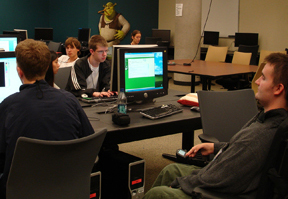
Information technology plays a key role in the three areas addressed in this article. In order for students with disabilities to prepare for careers in STEM fields, they must begin to use computing and networking tools at a young age. These tools can help them access resources, communicate with others, and perform academic tasks independently. The importance of the availability of assistive technologies for individuals with disabilities cannot be underestimated. Such tools are required if individuals with disabilities are to compete with their nondisabled peers. For all students and employees, the ability to perform tasks efficiently and professionally can earn the respect of educators, employers, and peers alike. The ability to control powerful technological tools can thus contribute to the acceptance of a person with a disability as an equal partner in learning and working situations.
One University's Efforts
At the University of Washington, the DO-IT Center is working to increase the participation of individuals with disabilities in STEM programs and careers. DO-IT began in 1992 and is primarily funded by the National Science Foundation, the U.S. Department of Education, and the State of Washington. Below, some of the DO-IT programs and activities that address the areas of preparation, access, and acceptance are discussed.
Preparation
The DO-IT Scholars program offers high school students with disabilities opportunities to study science, engineering, and mathematics; experience campus living; develop self-advocacy skills; interact with mentors; and use technology to pursue academic interests.
Internetworking
DO-IT Scholars learn to use computers and the Internet to explore academic and career interests. Computer and assistive technologies are selected for each participant; local Internet connections are established; and in-home training is provided. One Scholar who is blind reports, "Getting access to the Internet was the best thing that ever happened to me. In a way, my computer and access to the net have become my eyes to the world." A DO-IT industry partner reports, "Network communication is a liberating experience for many of these kids, since their disabilities aren't visible in their email. They have been quick to exploit the technology, both to communicate among themselves and to explore worlds that were previously inaccessible to them." A parent points out that too often, without a special program like DO-IT, students with disabilities have "inferior and inadequate equipment, and if they can get the right technology there is nothing that can stop them in what they want to do with their lives."
Mentoring
Through electronic communications and personal meetings, DO-IT Scholars are brought together with postsecondary students and Mentors to facilitate academic, career, and personal achievements. DO-IT Mentors study and work in a variety of fields, including computer programming, postsecondary education, statistics, physics, engineering, computer science, computer consulting, and biology. One Scholar describes Mentors as people who "provide us with useful contacts in academics, career, and personal areas. …They help participants find their talents and interests and confirm their goals."
Experienced Scholars practice communication and leadership skills as peer Mentors for new Scholars. Scholars and Mentors are encouraged to reach out and help others. For example, they communicate with patients at a children's hospital through an email account and computer system established at the hospital through DO-IT. A parent reports that her son, a Scholar with Attention-Deficit Disorder (ADD), "has already passed on some of what he got to another ADD child, by taking the boy to register for high school and showing him around so he will know where things are the first day of class."
Summer Study
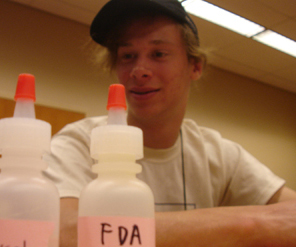
During live-in programs held during the summer at the University of Washington, each Scholar studies STEM by participating in lectures and labs and using computer applications and the Internet. Subjects include oceanography, heart surgery, chemistry, virtual reality, geophysics, material sciences, engineering, mathematics, biology, physics, and astronomy. Accommodations are made in each activity to ensure that all participants remain as active as possible.
In the words of Scholars after attending Summer Study, "I'm excited about many different careers I could go into," and "I learned what college life is all about." A mother of one of the Scholars pointed out how the Summer Study program boosted her son's "belief in himself and his abilities. … This experience has changed the course of his life." Scholars learn self-advocacy skills as part of the summer curriculum. One parent reported her son's plans to "talk to the math department head about challenging the math class he has been put into. He says it's too easy and he wants a more difficult class where he can learn something new. He is not asking for me to help. He has the courage to go and work on this on his own. Him being his own advocate has been coming, but this jump in ability is a direct result of the DO-IT experience." After observing two summer programs, a corporate partner noted, "We repeatedly hear the comment that these kids have never experienced a situation like this before where the focus is on their abilities (rather than their disabilities)."
Special Projects and Events
Throughout their involvement in DO-IT, Scholars have opportunities to pursue projects of special interest, using Mentors and staff as resources. Options include collecting scientific resources, administering computer systems, publishing articles in the newsletter, teaching in the summer program, and helping with other DO-IT events. DO-IT Scholars and other precollege and college students with disabilities and their families, teachers, counselors, and service providers are invited to participate in special events, including regional and national education and technology conferences. These events generate a lot of interest and often attract children with disabilities and their parents, who, after meeting DO-IT Scholars and Mentors, are encouraged to use technology and to pursue STEM interests.
DO-IT sponsors one-day college transition workshops and assistive technology seminars open to on- and off-campus individuals with disabilities, their families, service providers, and educators. These programs extend the impact of DO-IT projects to a large audience, helping more students with disabilities transition and adjust to college life and make effective use of information technologies.
Involvement of corporate sponsors in DO-IT Scholar activities is expected to pay off in terms of more accessible workplaces for individuals with disabilities. A Microsoft representative states, "I sincerely hope and expect to someday count DO-IT graduates among my colleagues at Microsoft." For Battelle Pacific Northwest Laboratories, involvement in the DO-IT project has "provided a way for our staff scientists and educators to learn firsthand what we can do to ensure that our working environment welcomes diverse students, including those with disabilities. The overarching goal of our participation is to enrich science and technology by opening the door to a diverse, highly talented work force. Through DO-IT, we have been able to link students to our scientists via the Internet, and provide opportunities for scientists to interact in person with students with disabilities. Our in-person activities have included hosting DO-IT students for a tour of our laboratories, and providing a summer internship for a selected DO-IT student."
Access and Acceptance
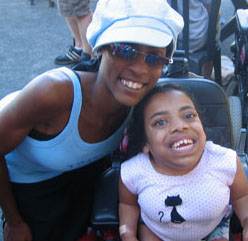
DO-IT works to create barrier-free campuses and worksites for individuals with disabilities, particularly in STEM fields. On the UW campus, the latest assistive technologies are available in convenient locations. Students with disabilities have been surveyed to assess the barriers they have faced, and staff have addressed issues identified.One of the most effective ways DO-IT improves access and attitudes towards students with disabilities is to invite university faculty to teach in the Summer Study program for DO-IT Scholars. Staff provide assistance in making presentations and labs accessible to all Scholars. Without exception, instructors come away with a positive impression of the capabilities of students with disabilities and a better understanding of access requirements.
Disability awareness presentations are delivered regularly to faculty. These programs increase awareness of the potential of students with disabilities, improve attitudes towards students with disabilities, and provide creative and practical approaches for ensuring access to educational opportunities. Three short videos, Working Together: Faculty and Students with Disabilities, Building the Team: Faculty, Staff, and Students Working Together, and Equal Access: Universal Design of Instruction introduce viewers to faculty and postsecondary students with disabilities demonstrating successful techniques for full participation in academic programs and careers.
Online tools allow DO-IT participants, Mentors, and staff to reach a worldwide audience. Electronic discussion lists facilitate communication on issues related to participation of individuals with disabilities in science, engineering, and mathematics. Web content and printed materials also promote the inclusion of individuals with disabilities in STEM fields.
In summary, DO-IT helps students with disabilities transition to postsecondary studies and careers in STEM and creates a positive and accessible learning environment. The long-term outcome of projects like DO-IT will be to increase the number of individuals with disabilities in STEM professions. To learn more about the successful practices employed by DO-IT, view the videos and read the publications titled How DO-IT Does It, Opening Doors: Mentoring on the Internet, DO-IT Pals, DO-IT Scholars, and DO-IT Snapshots.
Recommendations and Conclusion
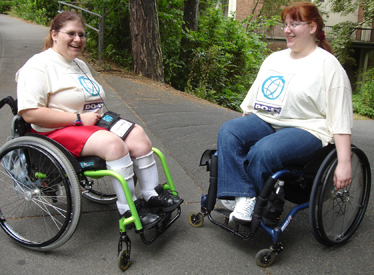
A review of the literature and of the experiences at the University of Washington leads to several recommendations to promote the inclusion of people with disabilities in STEM academic programs and careers.
Preparation
To help students with disabilities become prepared to pursue these fields, efforts should be undertaken to do the following:
- Help students with disabilities develop independent-living and self-advocacy skills and facilitate transitions to college and employment.
- Encourage students with disabilities to take mathematics and science classes in high school and college so that they can pursue careers in science, engineering, and mathematics.
- Establish positive, motivational, and lasting interactions between high school and college students with disabilities and practicing engineers and scientists who have disabilities.
- Make sure students with disabilities begin to use computers, electronic communications, and network resources to increase their independence in pursuing academic studies at an early age.
- Ensure that students with disabilities have full access to the general education curriculum in the early grades and keep pace academically with their peers, so that they will be prepared to pursue challenging classes in middle school and high school.
Access
To improve access to STEM fields, we must do the following:
- Make facilities, computers, science equipment, and programs accessible to people with a variety of disabilities.
- Ensure that scientific and mathematics publications are readily available in appropriate alternative formats.
Acceptance
In order to create a positive environment for learning and working, efforts should be undertaken to do the following:
- Increase the awareness of precollege and college educators regarding the potential contributions and accommodation needs of people with disabilities.
- Help employers and coworkers appreciate the potential contributions of people with disabilities and create a flexible work environment where productivity can be maximized.
In all of these efforts, successful individuals with disabilities should be given opportunities to share the specialized expertise they have developed through their own personal experiences. Individuals with disabilities can be empowered with opportunities to apply their skills in efforts to promote the participation of other individuals with disabilities in science, engineering, and mathematics academic programs and careers.
We must continue to increase the understanding of factors affecting the underrepresentation of individuals with disabilities, implement creative programs to address problems, and share successful practices. Many small steps taken locally can, together, create a substantial impact and move us closer to a shared vision where people with disabilities have equal access to opportunities in science, engineering, and mathematics.
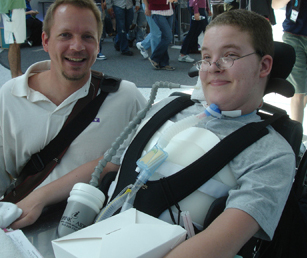
Tips: Teaching Access Challenges
Disability-related content can be incorporated into a course that prepares participants to teach science, mathematics, and technology in many ways. Consider some of the access barriers and solutions for students with disabilities as you prepare for and deliver instruction to preservice and inservice teachers.
A few ideas are described below:
- Discuss disability-related issues when other areas of diversity (e.g., gender, race/ethnicity) are discussed.
- If students in your postsecondary class visit local schools and observe classes being taught, have them take notes on teacher interactions with students who have disabilities, as well as access barriers they observe in the school setting.
- Discuss general strategies for fully including students with disabilities in elementary, secondary, and postsecondary STEM courses. Access To improve access to STEM fields, we must do the following: Make facilities, computers, science equipment, and programs accessible to people with a variety of disabilities. Ensure that scientific and mathematics publications are readily available in appropriate alternative formats.